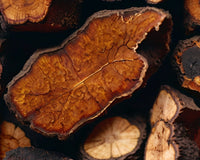Caramel coloring is one of the oldest and most widely used food colorings, the same substance that turns cola brown and gives beer its amber-gold color. Although it sounds natural, caramel coloring is not the same as candy canes. There are four types of caramel coloring, two of which contain chemicals linked to cancer in laboratory animals.
Identification
The four caramel colors include pure caramel; one that reacts sugar with sulfites; one that reacts sugar with ammonium compounds; one that reacts sugar with ammonium and sulfite compounds— The type of coloring used in most sodas. Caramel coloring is also found in brown bread, chocolate, cough syrup, vinegar, custards, stuffings, donuts, gravy browning, and many other foods.
Blood pressure
Although cola has been linked to increased blood pressure, the caffeine in the drink is thought to be the culprit. However, a 2005 study in the Journal of the American Medical Association found that while regular drinkers of caffeinated coffee were less likely to develop high blood pressure, regular cola drinkers were. The researchers concluded that another ingredient in cola may be the culprit—caramel coloring rich in harmful advanced glycation end products.
Cancer
The Center for Science in the Public Interest petitioned the Food and Drug Administration in January 2011 to ban two caramel colorings that react with ammonia because they contain the carcinogenic byproducts 2-MEI and 4-MEI. Meanwhile, California added 4-MEI to its list of chemicals known to cause cancer. Both complaints are based on studies published in 2003 and 2005 by the National Toxicology Program of the National Institutes of Health that showed the chemicals can cause cancer in some mice and rats.
Immune system
Caramel color III, the type produced from ammonia rather than sulfites, may reduce beneficial white blood cell counts in the blood, according to a 1993 study published in Toxicological Science. Dutch researchers fed mice a diet supplemented with caramel pigment III for a month and then measured their immune responses to Trichinella spiralis, a microorganism that causes trichinellosis. Mice given the highest levels of caramel pigment had the greatest decline in immune function.
Allergies
Some of the ingredients used to make caramel coloring can cause a reaction if you are allergic to them or have celiac disease or a gluten intolerance. Some of these include milk, corn dextrose, corn or wheat starch, and maltose syrup derived from barley. However, these ingredients are not always shown individually on product labels.





